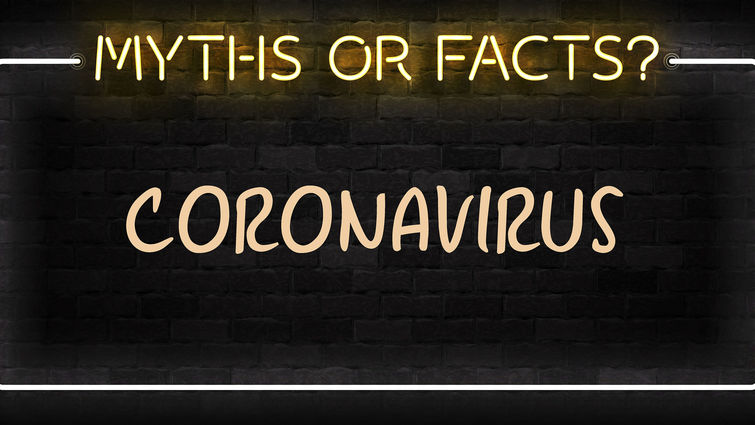
Coronavirus
The fight against the coronavirus has reached a year milestone, totaling more than 29 million cases in the United States alone, according to the Centers for Disease Control and Prevention (CDC). While anyone can carry and develop serious symptoms from the coronavirus, there is no way to predict who will have severe outcomes from the virus. With so much still unknown, doctors say people still need to be vigilant.
“Although there’s a light at the end of it, we are still in the tunnel,” says Jennifer Veltman, MD, chief of infectious diseases at Loma Linda University Health. “Information about COVID-19 seems to be everywhere, but there are still many common misunderstandings about the virus and the things surrounding it, such as masks and vaccines.”
Veltman shares that while wearing a face mask that covers both the nose and mouth is a great way to fight the spread of the disease, it’s also important to stay informed. She breaks down common myths and the truth behind them according to the CDC, the World Health Organization and other health experts worldwide.
Myth: Masking isn’t important now that people are getting vaccinated
Herd immunity is certainly a goal, but Veltman says to achieve it, a majority of the population will need to be fully vaccinated — making it more difficult for the virus to spread through the population.
“Herd immunity keeps vulnerable groups who are unable to receive the vaccine safe,” she says. “We don’t yet know what percentage of the population needs to be vaccinated in order to achieve herd immunity in those populations, but we estimate that it will be about 80-85%.”
About 19% of Californians have received one dose of the vaccine so far, according to the California Department of Public Health. “There is still a lot of work to do before we achieve the 80% coverage,” Veltman says. “Until vaccine rates are closer to 80%, we need to be careful not to let our guard down.”
Veltman says masking remains an important tool to fight the spread in unprotected populations.
Myth: Masks of any material will do the same job
Masks made of mesh, lace, or any see-through material may be easier to breathe through, but they don’t get the job done, Veltman says.
“Large respiratory droplets released when sneezing, coughing, or even talking can still pass through open-knit materials,” Veltman says. “For protection, a mask with a tight-knit material such as double-layered cotton is preferable to mesh or lace,” she says. As personal protective equipment becomes more available, surgical masks will become more easily accessible and offer additional protection. “A good rule of thumb: if you can easily blow out a candle through your mask, it may be too porous and a good idea to find a better quality product,” Veltman says.
Myth: Cloth masks don’t actually offer protection
Cloth masks keep you from unknowingly spreading the virus by limiting the distance respiratory droplets travel from the mouth and nose into the surrounding space. A mask also serves as a reminder to keep your hands away from your face, preventing you from getting the germs on your hands into your system.
“Pick a mask that has multiple layers of fabric, can be washed, and fits snugly on your face for the best protection,” Veltman says.
Myth: If you’re outside, you don’t need a mask
Spending time outdoors makes spreading the virus less likely due to the circulation of air outside. However, Veltman says it’s still important to wear a mask when you’re unable to physically distance from others.
“Viral particles can linger in the air, and may still be passed through the air you are breathing,” she says. “If you’re with your own household or in a secluded area, a mask isn’t necessary, but if you’re going out to an area that will be populated and you are unable to socially distance, make sure you have your mask.”
Myth: Double masking doesn’t make a difference
According to the CDC, wearing a cloth mask on top of a medical mask can reduce exposure by about 95%. If you already practice good masking habits by wearing a tight-fitting mask, the difference in protection may be less significant.
In an experiment by the CDC in early 2021, researchers found that surgical masks block roughly 42% of COVID-19 particles and cloth masks block about 44%. “Doubling up masks can also double up protection. Other devices such as mask fitters can also maximize the filtration properties of masks, but you also must balance these findings with comfort and fit,” Veltman says. “Wearing one well-made mask is better than no mask. If double masking is not feasible, one mask is better than none.”
“Misinformation on masks — and the virus in general — has spread, but the most important thing to remember is that by wearing a face covering, washing your hands, and staying home when sick, you can help others in your family and community,” Veltman says.
For more coronavirus information, visit lluh.org/coronavirus.
